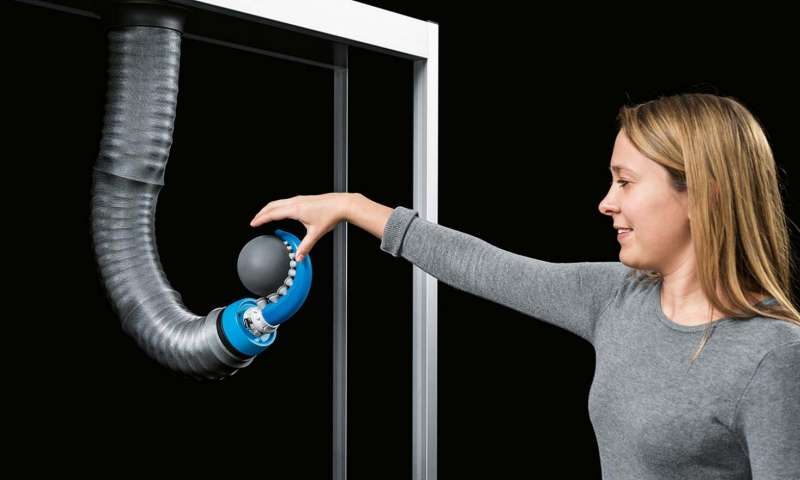Octopus tentacle inspires gripper design
Festo has come up with a bionic gripper, OctopusGripper. The company's focus areas include pneumatic, servopneumatic and electric automation technology and the Octopus Gripper is certainly drawing attention in the tech press. The name is quite apt. The gripper has been modeled on an octopus tentacle. Its advantage lies in its ability to grip softly but securely. What is more, the OctopusGripper can pick up and hold a variety of different shapes.
Why did the Festo team choose the octopus as a model for the gripper? "The octopus is a fascinating creature," said the team. "As it has no skeleton and is made almost entirely of soft muscle, it is also extremely flexible and manoeuvrable. This not only means it can swim agilely in all directions, but also grip a wide range of objects in a form-fitting manner."
Well, not to be confused with the real creature with its water-based muscle, this is a Festo design where, as Samantha Cole in Motherboard explained, "compressed air bends the robot tentacle and controls its pliability. A combination of passive and vacuum-powered suction cups provides grip."
The soft silicone structure is pneumatically controlled. With compressed air applied, the tentacle bends inwards and wraps around an item. The team followed the natural model to come up with their design: two rows of suction cups are on the inside of the tentacle—small suction cups and larger suction cups.

Why their gripper matters: Jamie Condliffe, MIT Technology Review, said, "It's notable because grasping irregularly shaped and slippery items is an incredibly difficult task for most robots, and advances such as this will make it easier for robots to take up more roles in factories and homes."
Another key advantage lies in level of safety. "It fulfils the strict criteria of a soft robotics component," said video notes. What that implied is that it has "potential for collaborative working space of the future."Gizmodo's Andrew Liszewski addressed the safety factor.
"Robotic arms have already joined humans on assembly lines and in factories, but they often pose a safety risk. An accidental swipe by an arm made of steel as it whips around to grab a part can result in severe injuries and even death."
Over 10 years ago Festo initiated the Bionic Learning Network. In cooperation with students, universities, institutes and development companies, Festo sponsors projects, testbeds and technology platforms. The objective is to benefit from bionics as a source of inspiration for new technologies and realise these in industrial automation.
According to the Festo site, the team is testing the gripper on two pneumatic lightweight robots, which were also developed in the Bionic Learning Network: the BionicMotionRobot and the BionicCobot.





